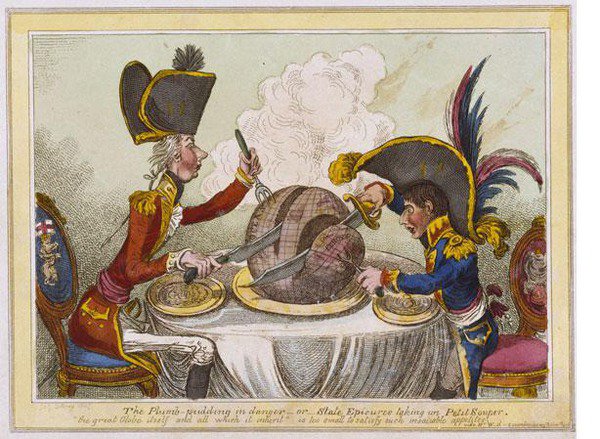James Gillray / Mika Rottenberg
dal 4/5/2012 al 30/6/2012
Segnalato da
4/5/2012
James Gillray / Mika Rottenberg
Nottingham Contemporary, Nottingham
Rottenberg's weird and dreamlike production lines, operated by remarkable female performers, conflate Marx's and Freud's commodity and sexual fetishes in delirious ways. Gillray's etchings reached a far larger market than the oil paintings of fine artists. His merciless satires of the great and not-so-good in Georgian England had immediate effect in the public sphere.

James Gillray
Europe in turmoil, revolution overseas, Britain embroiled in long expensive wars, MPs accused of improper use of public funds, the press obsessed with celebrity gossip, and a “broad-bottomed” Conservative and Liberal alliance. Not Britain in 2012, but Britain of the late 18th and early 19th centuries, whose excesses were so memorably captured by the great English caricaturist, James Gillray (1756 – 1815).
Gillray is the genius of early popular satire in Britain. His public savaging of monarchy, politicians ‘polite society’ and church was unprecedented. Even today, when there are few no-go areas for the media, Gillray’s satire retains its ability to shock. He lived in an era that saw the loss of the American colonies,
Revolution and the subsequent Reign of Terror in France, the period also encompassed the movement to abolish slavery, and a monarch who lost his sanity – as did Gillray later in life himself.
He has left us some of the most abiding images of power humiliated, including a gargantuan, decadent Prince of Wales, a pint-sized Napoleon with major anger-management issues, a frugal and absurd King George III, and an emaciated hyperactive school boy Prime Minister – William Pitt the Younger.
As a caricaturist Gillray is still perhaps unsurpassed. A brilliant draftsman, he could distort bodies for comic effect, but leave viewers convinced of their reality. He restaged the events of the week in mock-heroic epics, borrowing from Shakespeare, Homer, Milton and the Old Testament, or parodying the
fashionable Baroque and Romantic painters of his day. His use of visual metaphor borders on the Surreal. A portly bishop rises in a hot air balloon (a recent invention). Members of the opposition appear as a vicious swarm of bees.
Although two centuries and their choice of medium separate them, Gillray shares with Mika Rottenberg a delight in comic excess and bodily exaggeration as a means of making serious political points.
The exhibition was selected from the Victoria & Albert Museum’s exceptional collection
-----
Mika Rottenberg
The first major UK exhibition of Mika Rottenberg’s arresting and comically disturbing video works will be shown in three of our four galleries. Visitors will view them in specially created installations which create conditions as claustrophobic and absurd as those endured by the women workers she portrays.
Her videos explore labour – particularly repetitive women’s work. Her glamorous and oddly erotic workers are squeezed into sweatshops – often literally. Bodily fluids are sometimes part of the production process, where lo-fi machinery and Heath Robinson-like contraptions produce uncertain goods.
Rottenberg’s work plays with the manufactured aesthetic of the beauty salon – hair, nails, bellies, bums and breasts become autonomous objects. Her models are often out of the ordinary, such as the formidable Queen Raqui and the statuesque erotic model Bunny Glamazon. Rottenberg is interested in the dynamic between the exhibitionist and the voyeur. Her art works hint at power relations and reversals. A self-avowed feminist, she has said her work started with Marx.
Mika Rottenberg was born in 1976 in Buenos Aires and now lives in New York.
The exhibition is a collaboration with de Appel arts centre in Amsterdam.
Image: James Gillray, The Plumb Pudding in Danger, © V&A Images/Victoria and Albert Museum
Opening 5 may
Nottingham Contemporary
Weekday Cross Nottingham
Tuesday - Friday 10am - 7pm, Bank Holidays and Saturdays 10am - 6pm, Sunday 11am - 5pm
admission free



